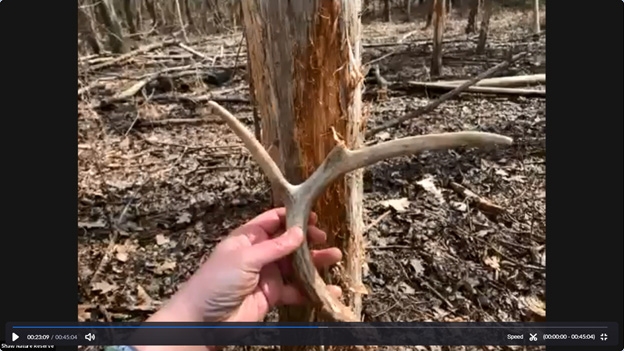Shaw Nature Reserve
Shaw Nature Reserve
“Nature Tracking in the Forest” is a virtual ecosystem exploration program for grades 4-12 where students collect and evaluate evidence to develop explanations about what animals are present in the area and what behaviors they have been engaging in. In this program, educators lead fifth grade students through an exploration of the forest ecosystem at Shaw. Educators introduce a mystery animal and students are challenged to find evidence in the Shaw Nature Reserve forest to support in identifying the mystery animal. The educators’ use of multiple modalities help ground the students in the virtual field trip while the facilitated social interactions encourage exchanges between students and between the educator and students to help clarify information, share ideas, and encourage reflection.
The educator uses multiple modalities to orient the students at the beginning of the lesson. She uses Google Earth to zoom into a view of the students’ school and pauses on the satellite image of the school before asking the class if the site looks familiar. The educator then uses Google Earth to simulate travel from the school to Shaw Nature Reserve. She compares the Google Earth travel to an eagle soaring over the clouds. The educator provides an overview of characteristics of Shaw Nature Reserve as she travels over space in Google Earth, identifying the various ecosystems (prairie, pond, forest, river) that are shown on the satellite image before “arriving” at the Shaw Nature Reserve Learning Campus.
Students are actively involved in learning throughout the program. After some introductory activities to situate students towards their challenge of identifying evidence of animals in the forest, the students are introduced to a second educator who takes them on a virtual walking tour through the forest at Shaw Nature Reserve. This educator pauses often to prompt the students with questions, encouraging them to add ideas to their journal entries (see an example journal page below).
Example journal page

The educator encourages social interactions by having students share their journal responses with their neighbors in the classroom. She provides opportunities for peer interaction by encouraging conversation as she transitions to different locations in the forest. In one instance, she explains how she wants partners to interact using ping-pong style conversation. One partner says something in response to the prompt, then the other partner says something. The partners alternate back and forth until the educator reaches the next location to study with the group.
The educator continuously uses combinations of multiple modalities and social interactions to keep students actively involved throughout the program. As the educator spots new evidence of animals in the forest ecosystem, she uses her camera to zoom in and pan around so that the students can make their own observations from multiple angles. For example, the educator approached a tree and brought the camera really close to the trunk to show students what the tree’s normal bark looked like. She explained that there was a clue on the tree and told them that she would scan the camera down the length of the tree. She prompted them to “do coyote ears” when they spotted the clue themselves. When the texture of the tree bark changed, the students lifted their hands to cup their ears. She confirmed their observations and went on to explain that the shredded bark resulted from a buck using an antler to scratch the tree, holding up an antler and demonstrating the motion as she spoke about the signals the buck may have been communicating to other deer in the forest.
Tree bark example

This practice exemplifies social interactions between the students and the educator by allowing the students to signal to the educator as they made observations. Students then answered her questions as she facilitated a discussion regarding the evidence they observed.


